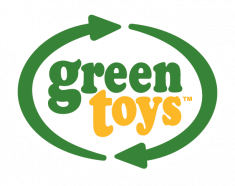
Unaltered photo by Jonathan McIntosh via Wikimedia Commons, Attribution 2.0.
A downloadable version of this lesson is available here:
The United Nations (UN) has established 17 Sustainable Development Goals (SDGs) that broadly address the critical interdependencies between human well-being and environmental health. These goals include such human-centered priorities as poverty, hunger, education, job opportunity, and gender equity, as well as environmental concerns like climate change, freshwater quality and quantity, and the health of aquatic and terrestrial ecosystems. Goal #12, Sustainable Consumption and Production (SCP), tackles a particularly challenging conjunction of “green” best practices in production, with the back-end realities of unchecked consumerist habits, including plastic and toxic waste disposal. Goal #12, however, may not adequately address the unsustainable culture of normative consumerism, where high volumes of elective purchases are viewed as normal or even virtuous within a model of endless economic growth that shows little regard for the impacts of producing consumer goods and disposing of the waste they create.
Bengtsson et al. (2018) conducted a critical appraisal of the SCP framework and discerned between two approaches: efficiency and systemic. They note the ongoing bias toward viewing SCP as a production challenge to be solved by technological efficiency and so-called “green” consumerism, despite the limitations and outright failures of this approach. Instead, the authors call for a promotion of systemic interventions in consumer norms, habits, cultures, and needs. They advise several systemic changes: curtailed paid labor; good quality public services; support for cooperatives, worker-owned companies, community ownership, and small-scale business rooted in communities; and spurring health benefits of exercise and a high quality diet, alongside universal healthcare access. These interventions would go a long way toward a new social order beyond consumerism and ecological bankruptcy. In this lesson, learners will consider in depth one advised SCP systemic change and design a local strategy to develop a critical mass of participants in that initiative.
- Conduct an in-depth analysis of UN SDG #12, Sustainable Consumption and Production.
- Discern between “efficiency” and “systemic” approaches to reducing consumer impacts.
- Identify and detail five key action areas in systemic sustainable consumption.
- Creatively design a new or upgraded initiative that achieves systemic change in your local community.
Ask learners: Have you recently purchased something that has a “green sheen”—promoted as a sustainable or recyclable product, or made of recycled or biodegradable materials? Did you choose this product over others without such branding? As a whole group, name several items that fall in this “green consumerism” category. Ask: Do such products achieve gains in sustainability? Do they support normative consumerism, where the impacts of the product are definitely not sustainable? Have learners detail two to four limitations of this “efficiency” approach to the UN SDG #12, Sustainable Consumption and Production.
Systemic Sustainable Development (One 75-minute class period, with an optional extension)
-
As preparation for class, have learners read and take notes on the article by Bengtsson et al. (2018), paying special attention to the highlighted portions and the content from page 1543 to the end. Learners should also review the 17 UN Sustainable Development Goals for an overview of the areas of action and intersections among these broad goals. They should pay special attention to SDG #12, Sustainable Consumption and Production (SCP), which includes an “overview,” “targets and indicators,” and “progress and info.”
DocumentBengtsson et al. 2018 – Highlighted.pdf (539.27 KB) -
(10 min.) Review the major concepts of SCP and the Bengtsson paper using these lesson PPT slides.
-
(15 min.) Divide learners into small working groups of three to four, either by asking their preferences or by assigning them to focus on one of the following five action areas that Bengtsson et al. identify to achieve systemic sustainable consumption:
- Curtailed paid labor
- Good, quality public services
- Support for cooperatives, worker-owned companies, community ownership, and small-scale business rooted in communities
- Spurring health benefits of exercise and a high-quality diet, with universal healthcare access
- A new social order beyond normative consumerism and ecological bankruptcy
The last of these ideas is broader and more revolutionary; it might be considered as an achievement based on global, aggressive gains in the first four initiatives. Have each small group quickly review the description of their systemic change in the Bengtsson paper and spend a few minutes in online research seeking real-life examples of their action area, as well as challenges and setbacks. From this lightning introduction to the topic, each group should create a short list of their initiative’s benefits, challenges, and real-life examples.
-
(10 min.) Now, have groups consider the differential challenges between wealthy, developed countries with high levels of elective consumerism (The Global North), versus developing countries where most consumerism is limited to necessities, though elective consumerism may be a future goal (The Global South). How do people in these contrasting economic and cultural situations experience consumerism differently? How does that inform the design and implementation of the group’s action area to achieve systemic sustainability in different situations? Have each group list two to three ways The Global North could help The Global South in improving quality of life without structuring their economies on unsustainable consumerism and cultures of waste—the poor example of the Global North. Then, list one way the Global South might provide models for a more sustainable Global North.
-
(15 min.) Groups should now focus on their action area within their local culture—most likely in a Global North country. The challenge for each group is to creatively imagine ways to revolutionize normative consumerism, by reducing the individual’s need to consume products and replace consumerism with collective ownership, reuse and closed material loops, economies of service and creativity rather than material goods, and public services that improve quality of life and reduce the environmental impact of a decent lifestyle. At this point, groups should design “carrots,” or enticements to voluntary participation, rather than “sticks,” or policies and regulations that impose systemic changes. Ask each group to create and detail one initiative within their action area that their community could implement. As part of this creative work, have groups sketch out a publicity campaign that could attract a critical mass of participants.
-
(20 min.) Each group now has 3-4 minutes to present their ideas to the whole group and 1-2 minutes to field questions. Instructors may compile these ideas that demonstrate five new or upgraded areas of systemic change toward a new paradigm of sustainable consumerism: consuming less and more wisely.
-
As homework, have groups post their action area initiative to the course discussion board and have learners contribute comments to all initiatives to help groups hone their ideas.
-
As an optional extension, learners at all levels may benefit from having the opportunity to use their college or university community, or the local area, as a testing ground for their initiative. Learners in small groups could act as societal change-agents by implementing semester-long projects where they design, publicize, and launch ideas. These might include second-hand and upcycling outlets; shared pools for tools, electronics, and transportation; incentives to support local businesses that invest in their communities; invitations to no-buy or low-buy weeks or months; health-building communities of exercise, care, and therapy.
-
A literature review of sustainable consumption and production: A comparative analysis in developed and developing economies
This literature review of published articles related to sustainable consumption and production forms a comparative analysis of sustainable consumption and production practices within developed and developing economies. Their findings suggest that countries in Europe hold international leadership in sustainable consumption and production practices. The authors analyze and discuss this finding, and articulate gaps and future research opportunities.
Wang, C., Pezhman, G., Lim, M.K. et al. (2019). A literature review of sustainable consumption and production: A comparative analysis in developed and developing economies. Journal of Cleaner Production 206, 741–754. https://doi.org/10.1016/j.jclepro.2018.09.172
-
“Looking garbage in the eyes”: From recycling to reducing consumerism-transformative environmental education at a waste treatment facility
This study explores how transformative sustainability learning is implemented in waste education at an environmental education center in the largest waste-treatment facility in Israel. Educators are seen as societal change-agents. The educational intervention became a “key experience,” initiating a transformative process in waste awareness. The principles emerging from this case study provide a model for other such centers, based on critical waste education that may motivate behavioral and social change.
Goldman, D., Alkaher, I., & Aram, I. (2021). “Looking garbage in the eyes”: From recycling to reducing consumerism- transformative environmental education at a waste treatment facility. The Journal of Environmental Education, 52(6), 398-416. https://doi.org/10.1080/00958964.2021.1952397
-
The Global Addiction and Human Rights: Insatiable Consumerism, Neoliberalism, and Harm Reduction
The authors critique the prediction that the current global economic slump will promote the “end of consumerism” and a “new age of frugality.” They contend that to genuinely break from the market culture that has depleted natural resources and abused human rights requires more than behavioral adjustments associated with spending less. They argue that insatiable consumption has become a global addiction whose treatment mandates a paradigmatic shift that breaks from the values, habits, and structures associated with neoliberal capitalism.
Perez, F., & Esposito, L. (2010). The Global Addiction and Human Rights: Insatiable Consumerism, Neoliberalism, and Harm Reduction.Perspectives on Global Development and Technology, 91–2), 84-100. https://www.researchgate.net/publication/233581553_The_Global_Addiction_and_
Human_Rights_Insatiable_Consumerism_Neoliberalism_and_Harm_Reduction
